It could take up to five years to develop a domestic supply chain to supplant China’s global monopoly in processing rare earths into materials needed to produce everything from iPhones to F-35 fighter jets.
While the United States has most of the 17 rare earth elements and 50 critical minerals underground, it has no industrial capacity to refine them into processed metals and magnets, according to Melissa “Mel” Sanderson, American Rare Earths board member and Critical Minerals Institute co-chair.
“Currently in the United States, we have zero magnet manufacturers,” Sanderson told The Epoch Times.
“I certainly hope, as the administration is working through this critical area—no pun intended, it’s a critical area—they realize there’s this vulnerability gap, a four to five year gap, no matter how you look at it, in terms of ramping up domestic production,” Sanderson said.
Trump’s April 2 order gives Commerce Secretary Howard Lutnick 180 days to suggest how the federal government can help develop a “circular” domestic rare earth supply chain.
The president is also pondering an order allowing deep-sea mining and commercial stockpiling.
Whatever the administration does, with enough permit reform, deregulation, and public-private incentivizing, industry will respond, economist Antonio Graceffo told The Epoch Times.
“The short answer is if China bans the sale of rare earth minerals to the United States” permanently, “that’s a positive thing because it’s going to force the United States to find a solution,” he said.
An analyst who writes about U.S.–China trade relations for The Epoch Times, Graceffo said there are “tons of solutions” to building a domestic rare earth supply chain, including the ongoing negotiations with Ukraine.
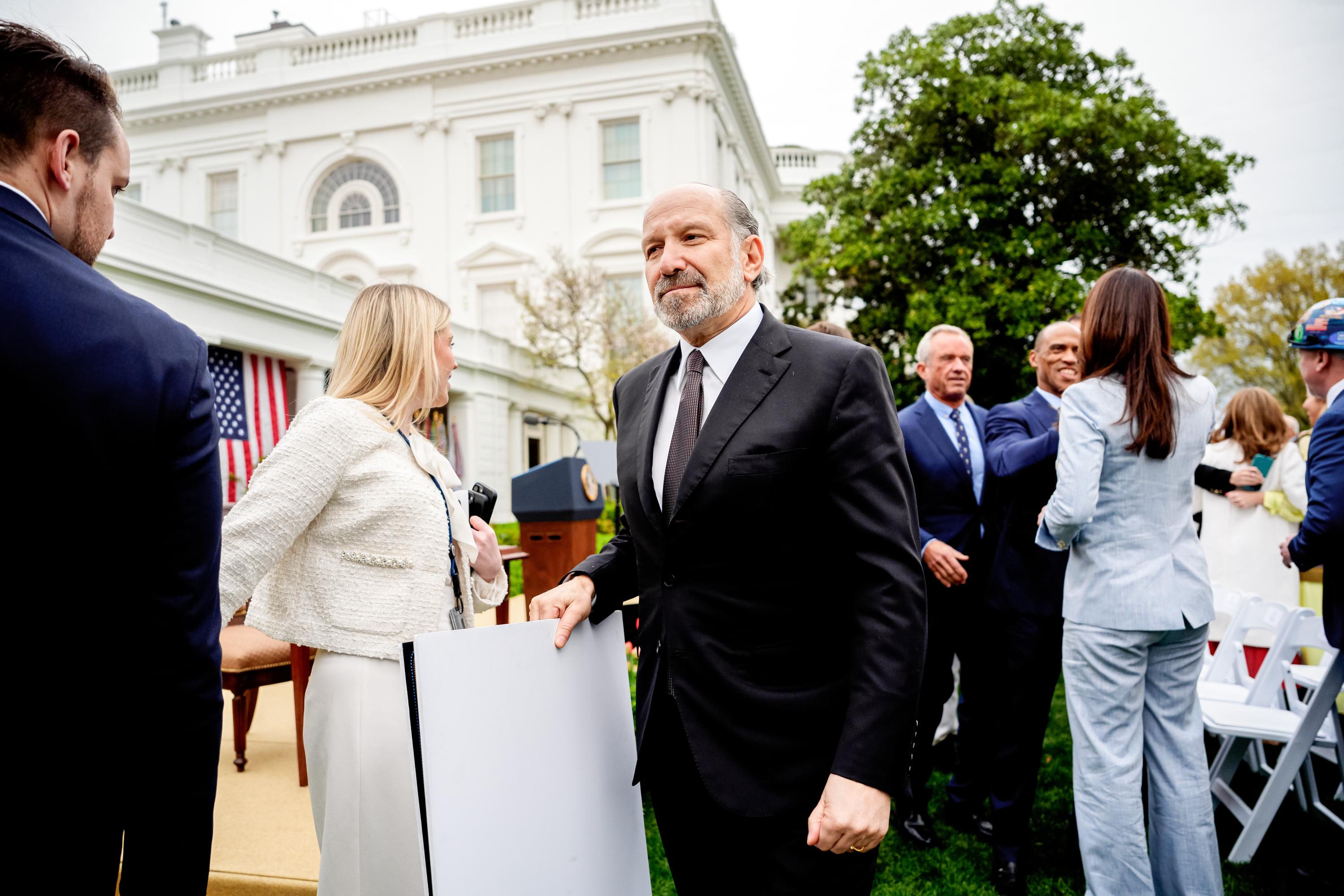
Commerce Secretary Howard Lutnick departs after President Donald Trump signs executive orders imposing tariffs on imported goods during an event in the Rose Garden at the White House on April 2, 2025. Trump announced sweeping new tariffs on imports from countries including China, Japan, and India. Andrew Harnik/Getty Images
“Absolutely, we can overcome the problem,” he said. “In the long run, it’s going to be much better if China cuts us off. [Industry] will definitely find a way.”
Colorado School of Mines economics professor Ian Lange agrees. “I’m on the optimistic side,” he said.
Lange said there are substitute materials for the seven restricted rare earths, and some manufacturers are telling him they’ll survive without them.
He questioned if China can sustain its rare earth export restrictions because American industries are their biggest market.
“We’ll see if this is a real or just another hoop to jump through,” Lange told The Epoch Times. “And we have been slowly building up the supply chain over the last couple years.
“We’re getting close to having something here in the United States.”
But “close” is a relative term when it comes to mining and refining, where proposed projects can routinely take 10 to 20 years to be approved.
‘Long Way Off’
Australian-based American Rare Earths is among a wave of start-ups in the United States engaged in rare earth and critical mineral mining.
It will also process dysprosium and terbium, two of the seven restricted “heavies,” by building a refinery near its Halleck Creek mine outside Wheatland, Wyoming. Dysprosium is used in magnets incorporated in motors and generators for wind turbines, electrical vehicles, and nuclear reactor control rods. Terbium compounds are used in electronics, semiconductors, and fluorescent lighting.
Also in Wyoming, Ramaco Resources is breaking ground on an estimated 1.5 billion-ton rare earth deposit and pilot processing plant at its Brook Mine, while Rare Element Resources has started “proprietary processing and separation operations” at its Bear Lodge demonstration plant in Upton.
Oklahoma-based USA Rare Earths, which is opening a “neo-magnet” factory this year, produced its first sample of dysprosium oxide from its Round Top, Texas, mine this year and processed it at its research plant in Wheat Ridge, Colorado.
Ucore Rare Metals is developing the Louisiana Strategic Metals Complex in Alexandria with $20 million in state incentives, and Energy Fuels, a uranium mining company, is processing monazite sands to extract rare earths at its White Mesa Mill in Utah.
Both are Canadian-owned corporations.
The two most prominent rare earth operators in the United States are Australia’s Lynas Rare Earths, the world’s largest rare earth developer outside China, and Las Vegas-based MP Materials Corp.
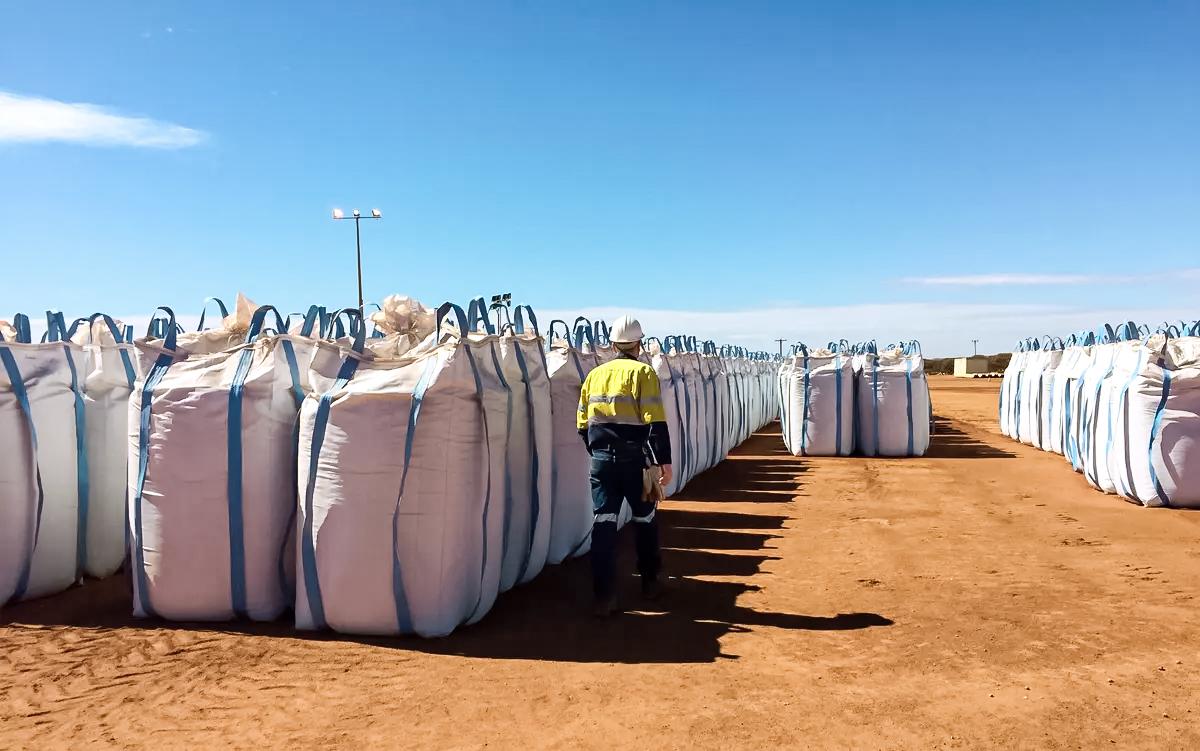
A Lynas Corp worker walks past sacks of rare earth concentrate waiting to be shipped to Malaysia, at Mount Weld, northeast of Perth, Australia, on Aug. 23, 2019. Melanie Burton/Reuters
Both are crucial in processing rare earths for the U.S. Department of Defense, which is midway through a five-year plan to build a “sustainable mine-to-magnet supply chain” to support its needs by 2027.
The Pentagon said in January it doubled its initial project request beyond military requirements to “strengthen supply chain resilience for … burgeoning high-tech industry as well as … national security needs.”
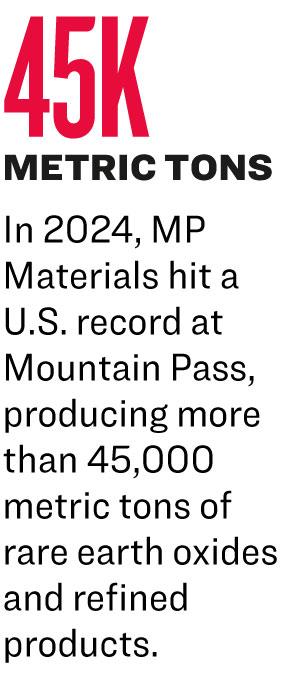
In 2024, MP Materials achieved an all-time U.S. high output at Mountain Pass, delivering more than 45,000 metric tons of rare earth oxides and refined products.
The output included a U.S. record of 1,300 tons of neodymium-praseodymium oxide, key elements in “permanent magnets,” which retain their magnetic strength for decades.
“This milestone marks a major step forward in restoring a fully integrated rare earth magnet supply chain in the United States,” MP Materials CEO and founder James Litinsky said in a January statement.
“We have reached a significant turning point for MP and U.S. competitiveness in a vital sector.”
Yet, both Lynas Rare Earth and MP Materials produce more rare earth ore than they can process. To sustain operations, they must export much of what they excavate.
“MP is basically China’s largest offshore supplier” of rare earth ore, Critical Minerals Institute Executive Chair Jack Lifton said, noting China-based Shanghai Resources Industrial & Trading Co. bought 32,000 tons worth $350 million from MP Materials in 2024.
MP Materials did not return phone calls or email interview requests.
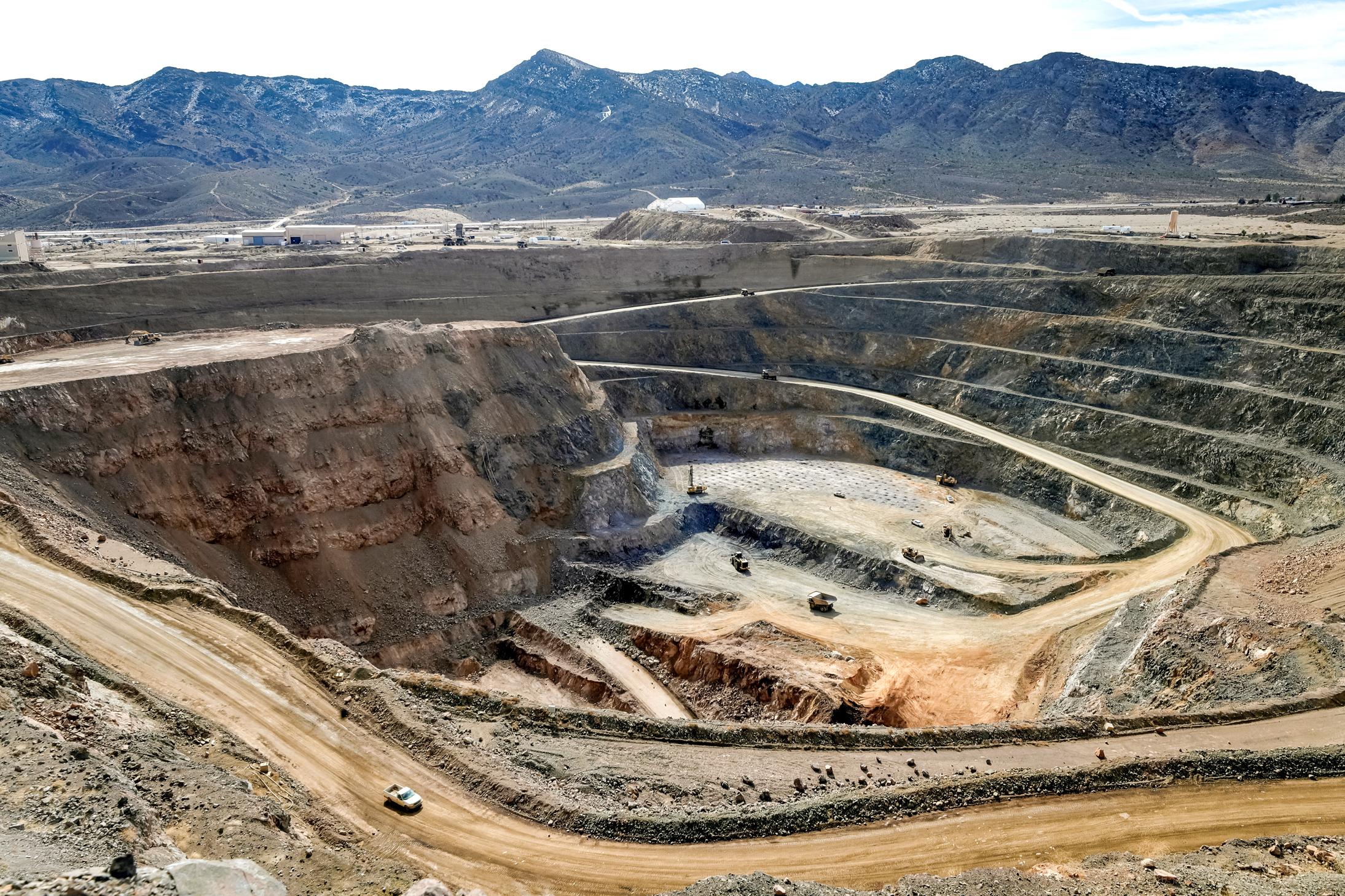
A view of the MP Materials rare earth open-pit mine in Mountain Pass, Calif., on Jan. 30, 2020. Steve Marcus/File Photo/Reuters
If China has to pay a 145 percent tariff to export processed rare earth minerals to the United States, “it would be financial suicide to keep that [export pace] up because they couldn’t do it—it would cost them more than it’s worth,” Lifton told The Epoch Times.
Meredith Schwartz, research associate at the Center for Strategic & International Studies’s Project on Critical Minerals Security, said Lynas, despite being the largest producer outside China, still sends oxides to China because it does not have enough refining capacity.
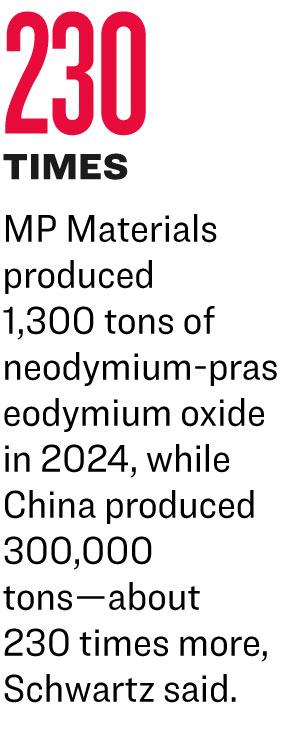
“But even when these facilities are fully operational” at MP Materials and Lynas in the United States, they are nowhere near commercial capacity and dwarfed by China’s output, Schwartz said.
While MP Materials produced 1,300 tons of neodymium-praseodymium oxide in 2024, “in the same year, China produced an estimated 300,000 tons,” she said.
Progress is being made, but there are setbacks and challenges, Schwartz said, noting that while USA Rare Earths
called purifying its first dysprosium oxide “a breakthrough” for the domestic rare earths industry, “significant work remains to turn production of samples in a laboratory into full-scale commercial production.”
“Even with recent investments the United States is a long way off from meeting the [Department of Defense] goal for a mine-to-magnet supply chain independent of China, and is even further from rivaling foreign adversaries in this strategic industry,” she said.
“Developing mining and processing capabilities requires a long-term effort, meaning the United States will be on the back foot for the foreseeable future.”
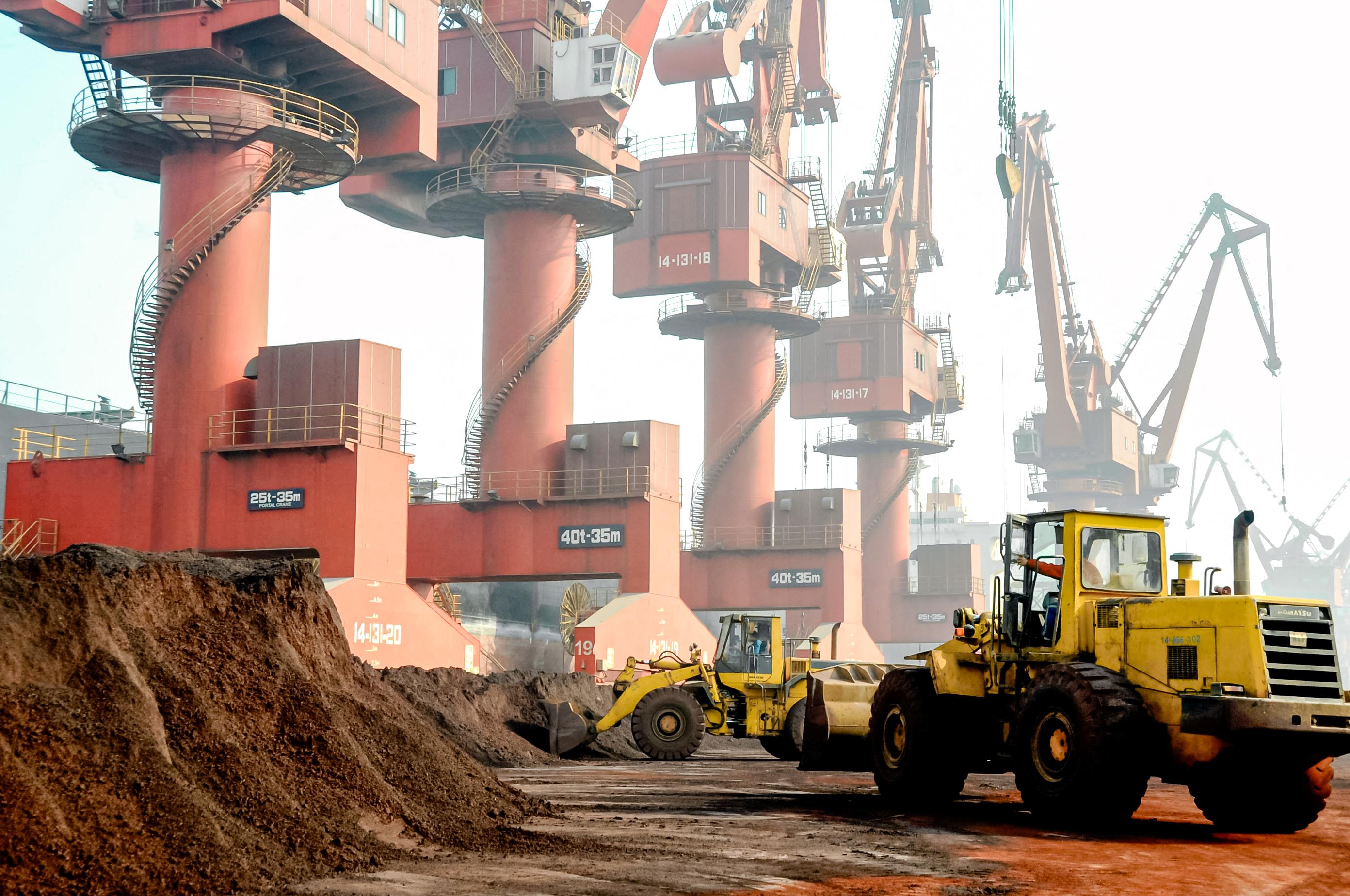
Workers transport soil containing rare earth elements for export at a port in Lianyungang, Jiangsu Province, China, on Oct. 31, 2010. Stringer/File Photo/Reuters
Permit, Financing Reform
Schwartz said pathways to building a domestic rare earths supply chain are included in a 2023 House Select Committee on the Strategic Competition between the United States and the Chinese Communist Party report titled, Reset, Prevent, Build: A Strategy to Win America’s Economic Competition with the Chinese Communist Party.
It recommends Congress incentivize domestic production of rare earth magnets through tax breaks to U.S. manufacturers, which Graceffo endorses as long as it comes with long-awaited permit reform.

Antonio Graceffo, an American economist and national security analyst who specializes in China, Burma, and conflict. Courtesy of Antonio Graceffo
“It’s going to be a matter of Trump repealing or rolling back some of the environmental restrictions, and probably some of our allies doing the same thing,” he said, suggesting American manufacturers will develop efficiencies to produce better, less-expensive products.
“Once you bring those things back home, you’ve got all those great minds, all those educated people, motivated by profit. It’s actually going to advance technological development because we’re going to find even better ways to do things,” Graceffo said.
“When you’re paying $25, $30 an hour to factory workers, you’re very incentivized to find more efficient ways to do things rather than when you’re in China paying 8 cents an hour.”
Sanderson said the Trump administration “is doing a heroic effort in addressing major pinch points that have affected the industry chronically in this country for the last 50 years or so.”
She said permitting reform is the first of those pinch points.
“The system is antiquated, inefficient, and subject to excessive litigation, which is what keeps good projects on the chalkboard for 20-plus years,” she said. “So they’re addressing that. They’re removing those barriers.”
Lifton said the Trump administration must establish a China-free “organized market” for rare earths. He’s surprised industry groups haven’t already done so.
“There’s no common thread, no common ground organization. You’d think, for example, the car companies all get together and say, ‘Listen, we’re not going to talk about our competitive [issues], relative costs, what our next year’s model looks like, we’re going to talk about common sourcing of rare earth permanent magnet motors because we all need that,’” he said.
Sanderson said another rare earth pinch point being addressed by the administration is a new “form of private public partnership” using Development Finance Corp. and Department of Defense money “to serve as an anchor for attracting private investment.”
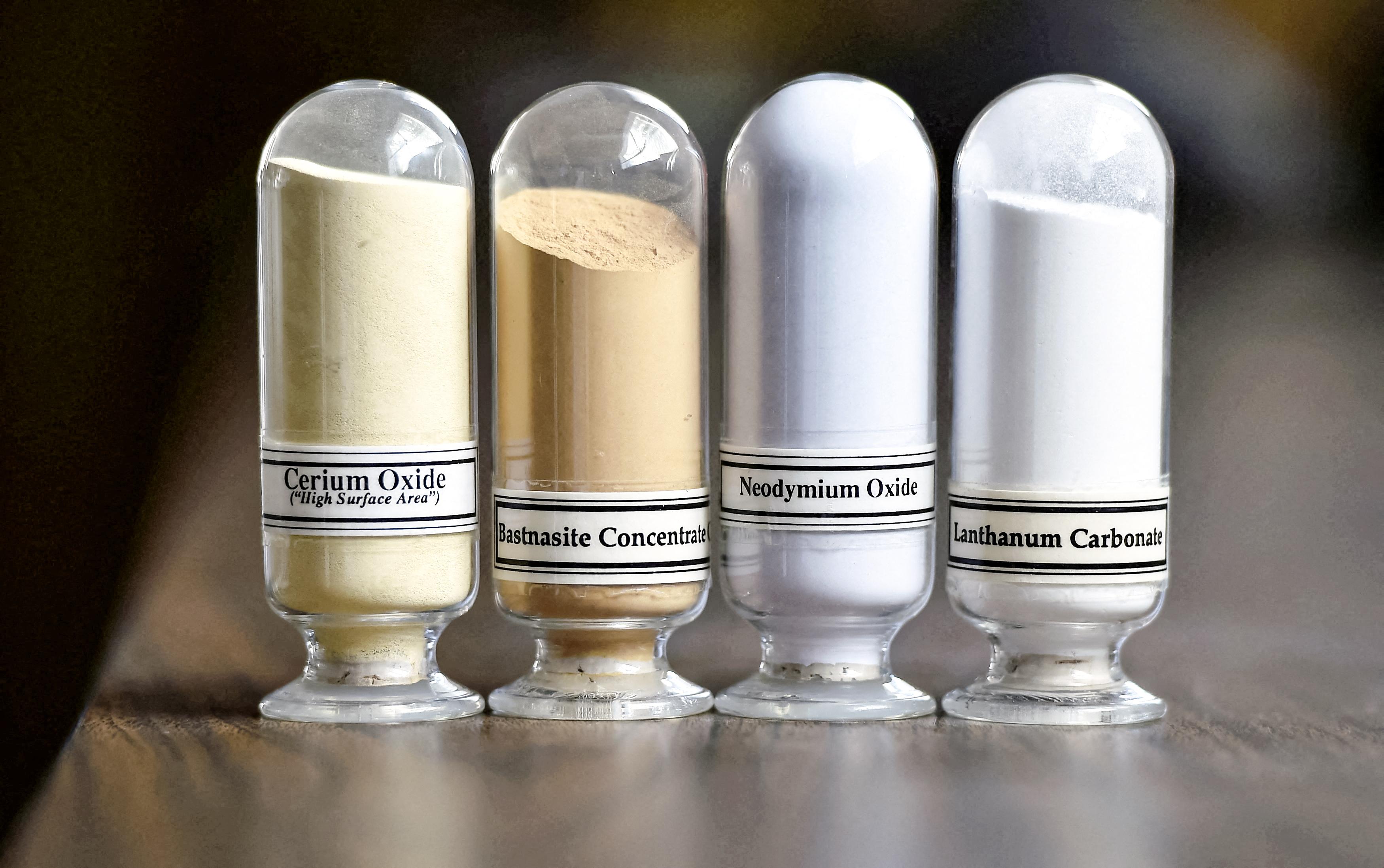
Samples of rare earth minerals (L–R) Cerium oxide, Bastnasite, Neodymium oxide, and Lanthanum carbonate are on display during a tour of Molycorp’s Mountain Pass Rare Earth facility in Mountain Pass, Calif., on June 29, 2015. David Becker/File Photo/Reuters
American Rare Earths, for instance, received its $456 million authorization from the U.S. Export-Import Bank through the president’s executive actions mandating supply chain resiliency, she said.
“The Ex-Im Bank was never set up to fund these projects” until it was directed to do so by the president.
Under the administration’s changes, a mine project doesn’t need a customer “guaranteed to buy all or a portion of the output,” to qualify for grants and loans, which makes the process faster, Sanderson said.
Financing is an issue in the mining industry, but of acute concern in rare earths development, she said.
“You found a lot of nice rocks in the ground. Goody for you. Now you need to be funded to transform yourself into an actual mining company,” she said. “U.S. banks don’t tend to lend to that.”
Rare earth mining and processing is “extremely capital intensive and once you have invested and you have started with the operations … these guys, they won’t invest if they don’t see they’re going to be operating the mine for 10 or 20 years,” said Didier Lesueur, CEO of the Western Research Institute in Laramie, Wyoming.
Lifton said “big capital is not interested” in rare earths. He noted that corporate global mining companies such as Rio Tinto don’t want to mine rare earths.
“So, no matter how much you talk about this, it’s a small business” in the context of the mining industry, he said.
Extracting rare earths from “host rocks” is “a black art kind of thing. It’s proprietary, a lot of proprietary operations. Nobody tells you exactly how they do things, and even when they do, you need to be a super specialist to understand,” Lifton said.
There are many expensive steps between the ground and the market, “and by the way, you have to dig up the stuff … that’s very expensive,” he said.
Sanderson said it’s difficult to extract the rare earths from within the material they’re embedded “and concentrate that to a level that makes the project economically viable.”
“Not all deposits ‘concentrate’ sufficiently to make them bankable,” she said.
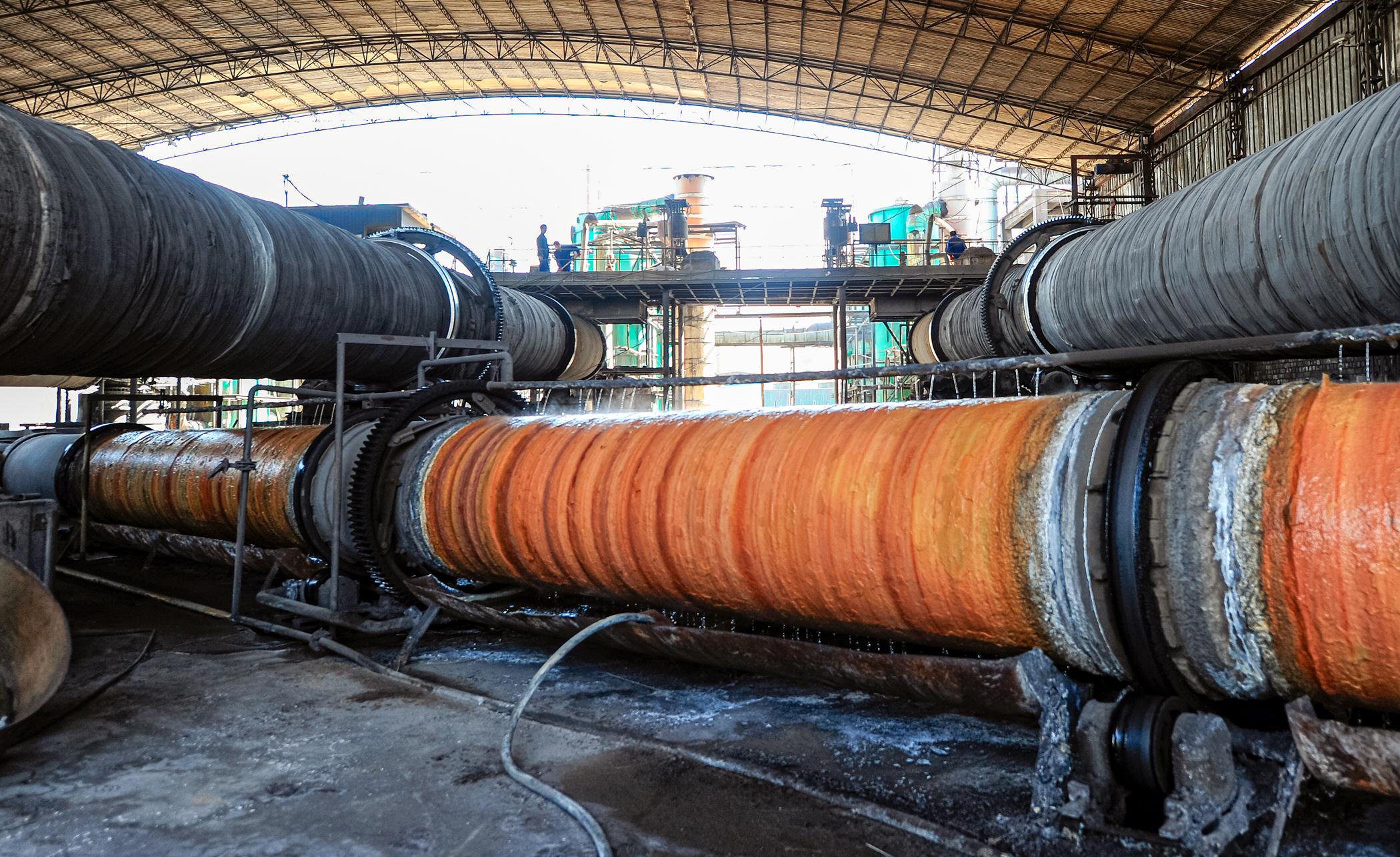
Rare earths cool under dripping water in steel pipes at a privately owned processing plant near Baotou, Inner Mongolia, on April 21, 2011. The facility is one of dozens operating in the area, where nearby farmers say toxic waste from rare earth and coal production has destroyed their livelihoods. Farmers living near the tailings dam, a six-square-mile expanse of toxic waste, report severe health issues, while tests show elevated levels of radioactive contaminants in soil and water. Frederic J. Brown/AFP via Getty Images
Timelines are also difficult to benchmark in rare earths development, she said.
“Any estimate any company gives—in any industry for that matter—on when they think a new plant or a new mine or a new processing facility is going to come online, is always a best-guess estimate based on a best-case scenario—where the supply chain doesn’t collapse, the price doesn’t become unmanageable, the weather cooperates, yada yada, yada yada.”
Nevertheless, Lifton said, with more than $400 billion in tax credits and other incentives available through 2022’s Inflation Reduction Act—at least for now—“Washington is floating on money for these projects.”
Lesueur said building a domestic rare earth supply chain will take time, and it’s worth taking the time to get it right.
“Can it be done rapidly? No,” he said. “Sustainably? Yes. It takes time because most of these projects, such as American Rare Earth’s Halleck Creek mine, are “green field projects” meaning, they’re starting from scratch.
Right now, the nation’s rare earths industry is “just small stuff in a big spot of land,” Sanderson said. “But hey, you start small and you grow, right?”
Original News Source Link – Epoch Times
Running For Office? Conservative Campaign Consulting – Election Day Strategies!





